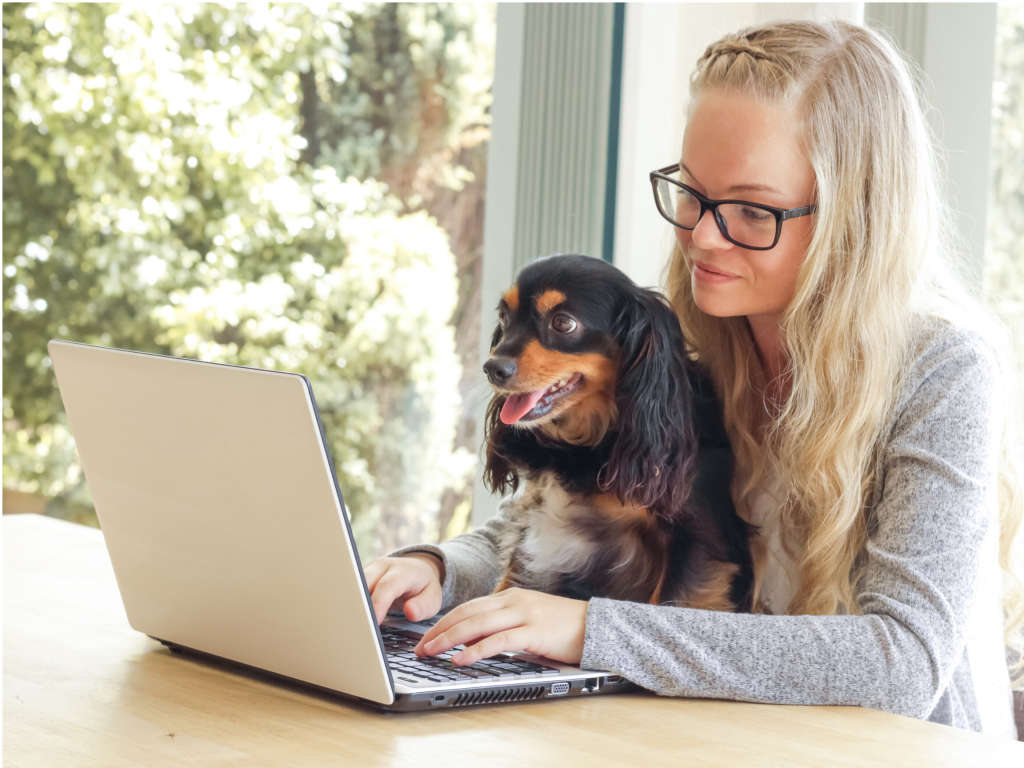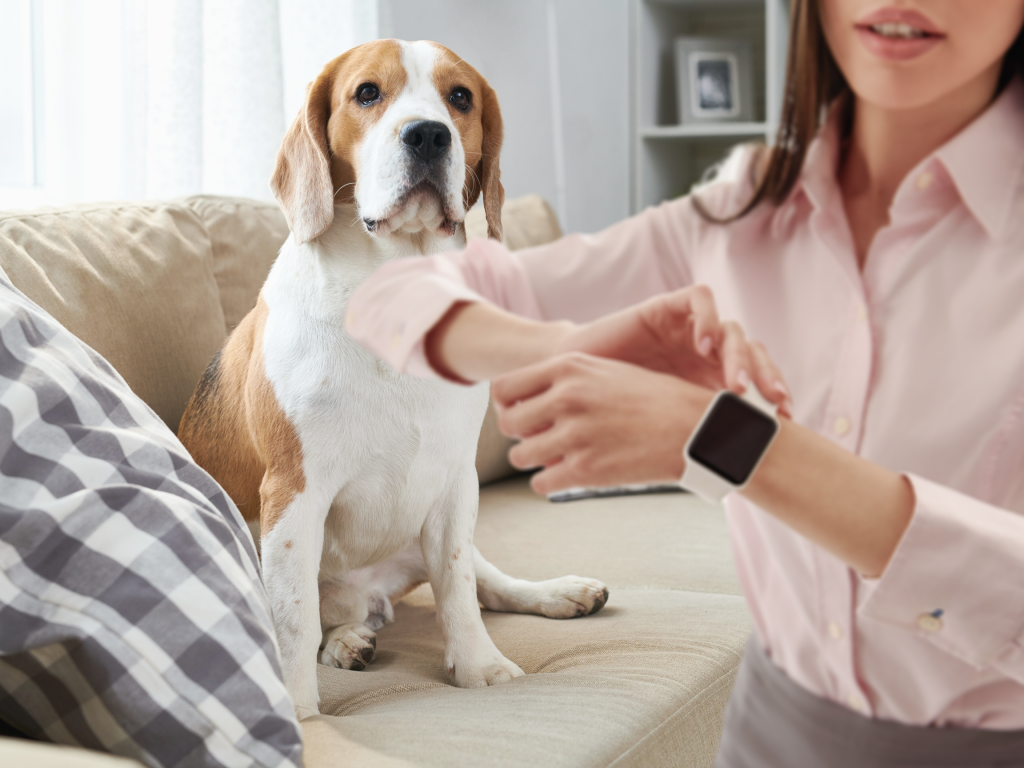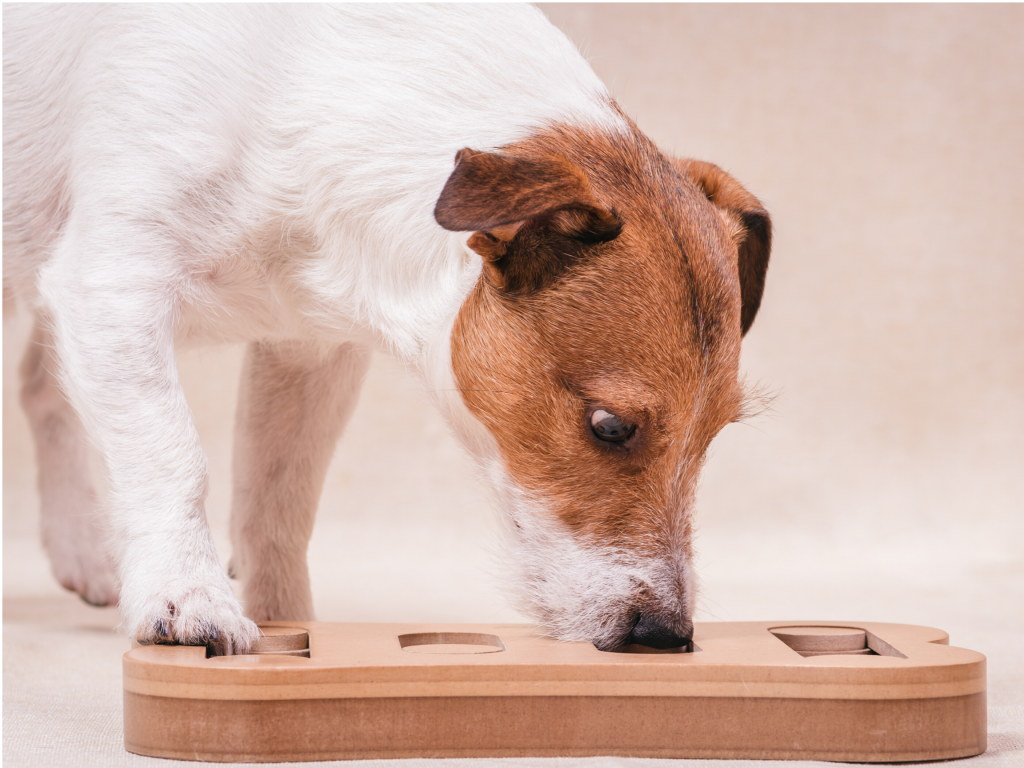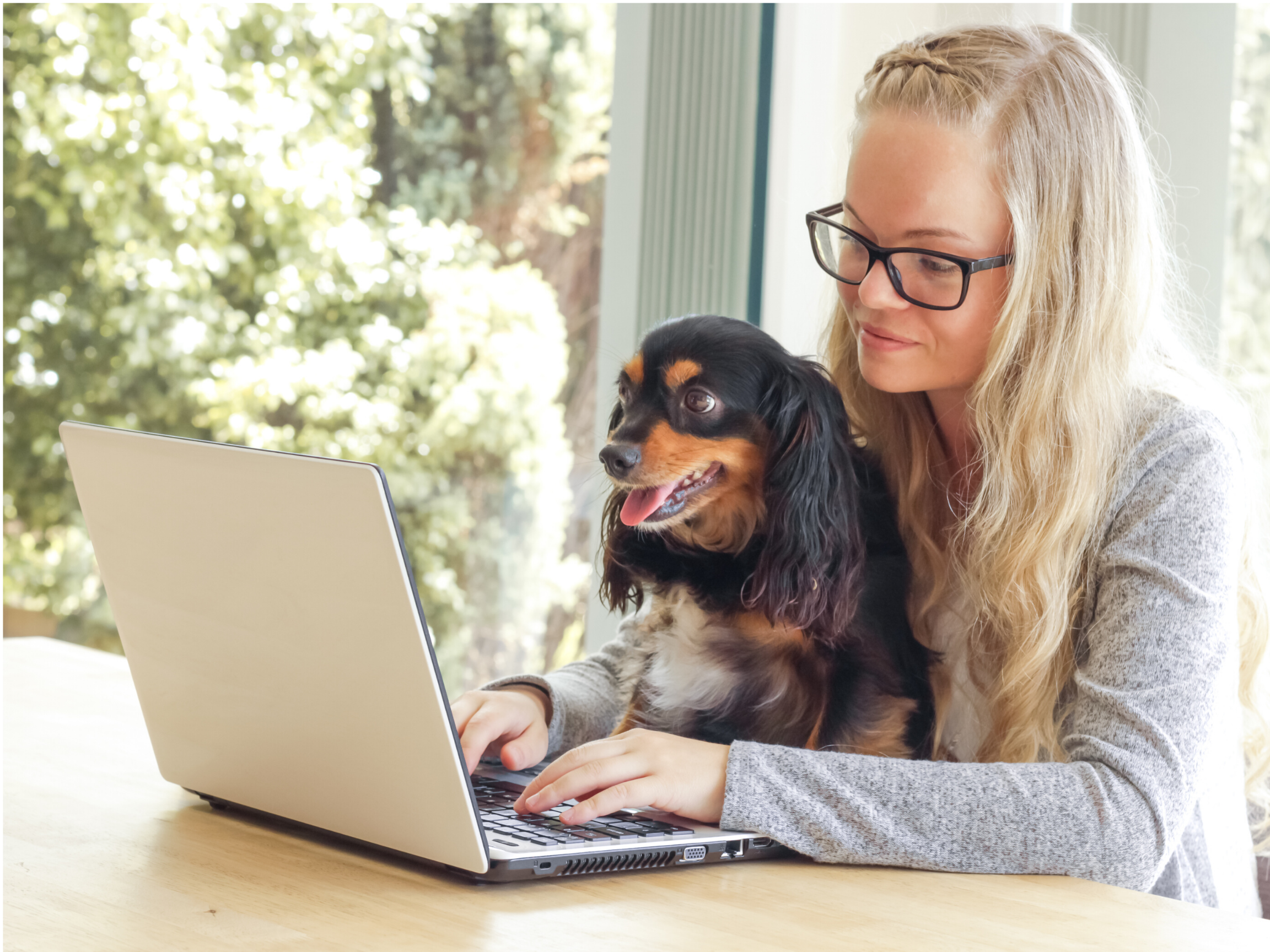
Separation anxiety is becoming more and more common. As our pets become a part of the family they become more attached to us and it can become quite stressful in some circumstances when you need to go to work and leave your pet behind.
Our first step in managing separation anxiety is always behavioural modification and training. Medication is a last resort, and not always helpful. Here are some helpful tips that may help you manage your pet’s separation anxiety.
Step 1 – Your behaviour
To start with, ensure your arrivals and departures are not a big deal on your side. That means remaining calm, and not making a big fuss over your dog. This can be especially hard when you return home, because it is easy to want to spoil your dog. Try to resist the temptation, and save the special pats and attention for a little later on. When you first arrive, don’t turn it into a big event.

Step 2 – Conditioning
Condition your dog to becoming used to the usual “cues” that you are about to leave. Many people notice that their dog starts to become anxious before they even leave the house. Dogs notice when you pick up your keys, pack your bags, put on certain clothes, and even put make-up on. It can be helpful to practice this, without leaving the house, so that your pet becomes accustomed to this routine.
As your dog becomes more accustomed to this, you can extend the conditioning to stepping outside the door briefly and coming back in again – each time not making a fuss out of the event. It is not time to reward or pat your dog – this is just a normal event, you are leaving and coming back.

Step 3 – IQ toys
Make use of the IQ toys available. There are many toys now available that require your dog’s attention and some thinking effort. There are puzzle feeders, snuffle mats to play hide-and-seek with, and toys that require persistence to retrieve food from, just to name a few. Start using these while you are actually at home, because often severely anxious dogs will not eat unless their owner is present. In some cases you may find you can transition to your dog’s entire daily food requirements being provided by a game.
Step 4 – Crate training
Crate train your dog. Crate training is actually a very effective way of giving your dog a “safe space” to go to when they are feeling nervous or anxious. It can take a bit of time, but start with a large crate in the family room with some clothes/blankets that smell comforting to the dog. That may mean they are your clothes, but try to use something that already belongs to your dog!
Start by leaving the door to the crate open, but making the crate the “treat den”. When you give your dog a treat, toss it in the crate. Make the crate a place of warmth safety and comfort. Try using a command such as “bed” or “crate” before tossing the treat in. You can start feeding in the crate as well – and work towards shutting the door while your dog is eating, then opening it again after the meal.

Get your pet gradually used to longer and longer periods inside the crate, with the door shut but you in the same room, before leaving your dog in the crate for long periods alone. Overnight is a good choice of first “long period” alone – you are still in the house, and your pet is just in a safe, fun, warm place.
Step 4 – Exercise
Exercise your dog before you leave them for any length of time. Try and early morning walk or play before work. It may seem simple, but making sure your dog has used up all their excess energy before confining them to the house can help control some of the more exuberant behaviours in some situations. Similarly ensure they have been toileted before being left.
Step 5 – Over the counter remedies
There are several over the counter remedies and supplements that you do not need to see a vet for, which you may find very helpful. Searching online for aDAPtil, Zylkene or Complete Calm may act as starting points. These products can be of some benefit, especially in milder cases, and some people have found this is all they need (along with behaviour modifications).
Each dog is unique and will have different triggers and causes for the separation anxiety. One thing that needs to be mentioned is that getting a companion dog does not necessarily solve the problem. Some dogs seem to be bored, and a second dog is simply someone else to destroy the house with. Others can be so people-centric that they do not rate other dogs as important or interesting, and continue to bark or whine. Each situation is unique however, and so making a long-term purchase such as a new dog, without any guarantee of success is a risky thing to do.
But all this takes time… and my neighbours are complaining, and my dog is destroying the house, and I can’t take several weeks off work to train my dog. What should I do?
Unfortunately there is no quick fix solution. Even behavioural medications can take several weeks to “kick in”. If you need an immediate solution while you are training your dog, you can consider options such as Dog Safari, doggy daycare, a pet sitter, a friend or relatives house for the day, or even (in some workplaces) you may be able to ask to bring your pet to work. If your dog is destroying your house, while you are working on desensitising them, it is worth confining them to the garage, bathroom or laundry so the damage is minimised. We do not recommend confining them to a crate without a gradual introduction, as the crate needs to become a “happy place” before it will be effective in a situation such as separation anxiety.
Over-the-counter treatments
As mentioned before, there are some non-medical treatments that some people find help with separation anxiety. These include things like aDAPtil (a Dog-Appeasing-Pheromone) that comes in a collar or a spray and is designed to help your dog find his or her happy place. There is a milk protein marketed as Zylkene which some people have found helpful with separation and generalised anxiety, and there are several herbal calming supplements such as Complete Calm that can be of limited use as well.
Be very careful using essential oil diffusers as calming treatments, as these have been linked to toxicity, and the jury is still out on how safe they are. There are several conflicting reports on which oils are safe and which are not safe. Lavender seems to be generally reported as safe, but if your dog is sneezing or reacting to it in anyway, please avoid using it. In general we recommend avoiding essential oils unless you have spoken to your vet first.
Medications
While medications are usually a last resort, if you are committed to behavioural modification, in some situations they can be used as an aid to training. Speak to your vet about your situation and find a plan that is right for your pet. Every dog is different and will need to be assessed and treated as an individual.

